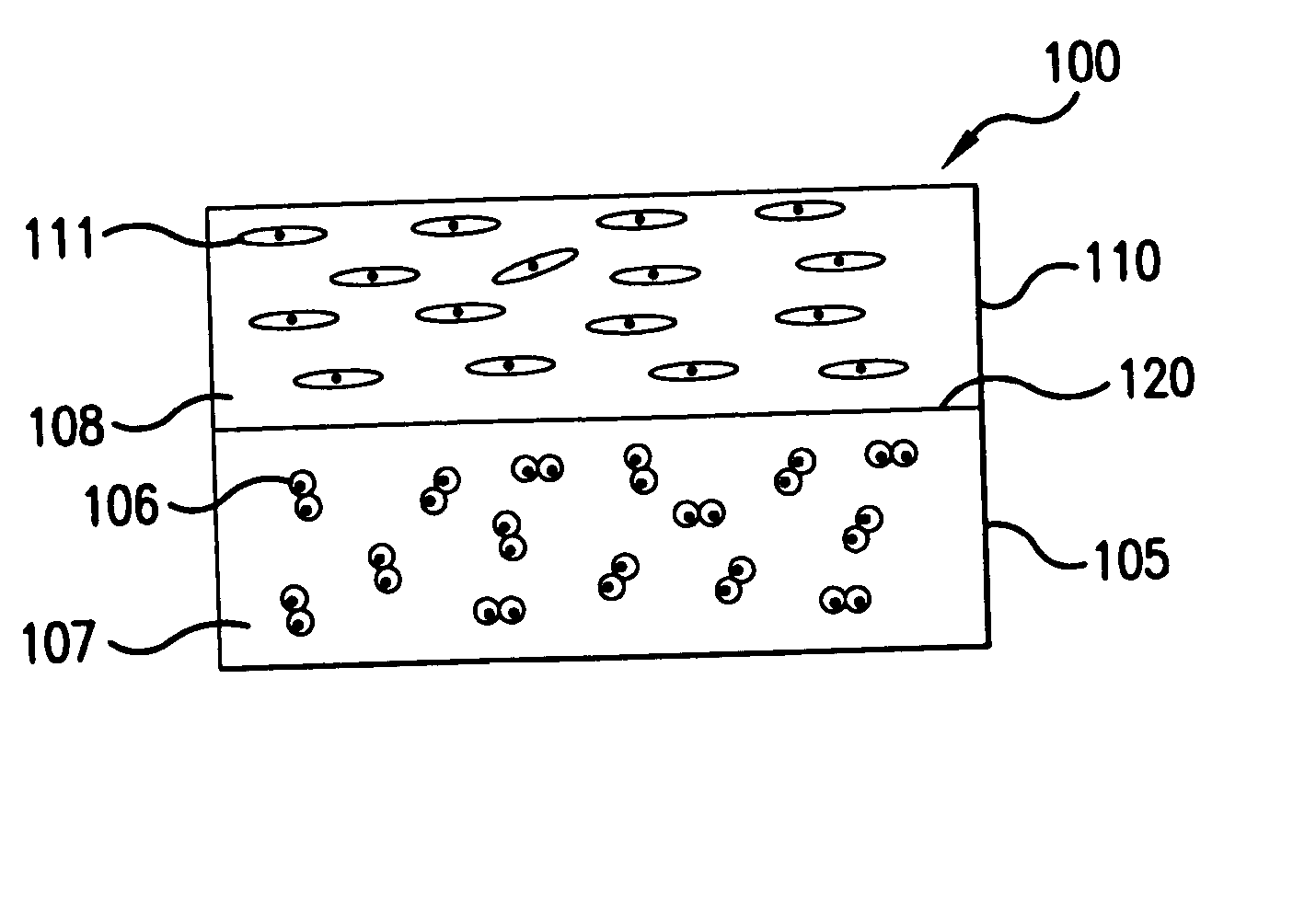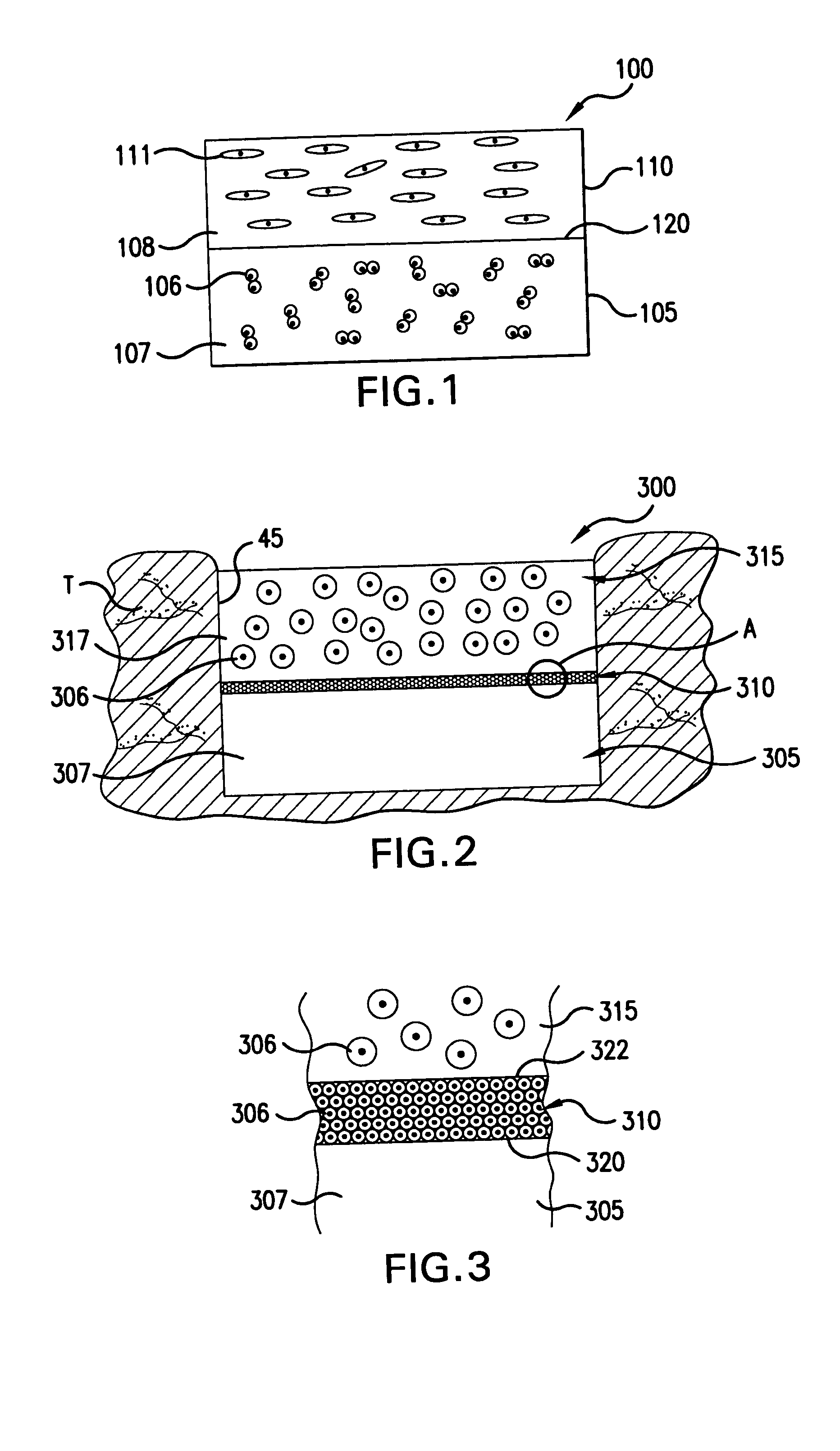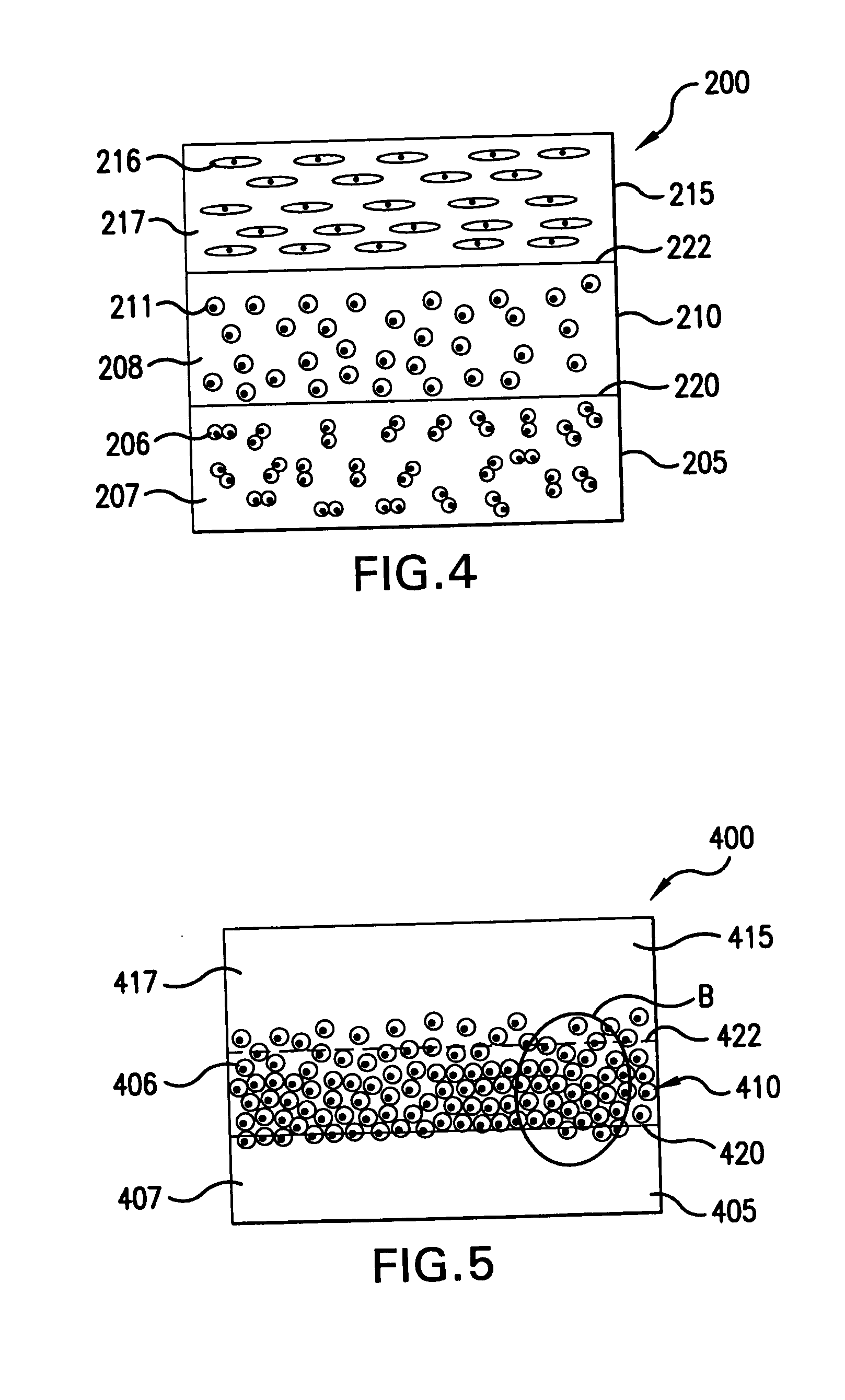Multi-layered polymerizing hydrogels for tissue regeneration
a tissue regeneration and polymerization technology, applied in the field of tissue engineering, can solve the problems of homogeneous encapsulation of cells throughout the hydrogel, inability to accurately reproduce the physiologic cellular organization, and the beginning of the osteoarthritis process
- Summary
- Abstract
- Description
- Claims
- Application Information
AI Technical Summary
Benefits of technology
Problems solved by technology
Method used
Image
Examples
example 1
ILLUSTRATIVE EXAMPLE 1
Multi-Layered Tissue Construct Encapsulating Chondrocytes from Three Zones of Articular Cartilage
In this illustrative example, a three-layered tissue construct, such as shown in FIG. 4, is created using a photopolymer, a photoinitiator and UVA radiation to effect crosslinking and hydrogel formation, and the encapsulated cells are chondrocytes harvested from three different tissue zones in mammalian articular cartilage. The present three-layered tissue construct, while formed in the cavity of a mold, is suitable for transplantation and could have been engineered in situ directly in the cavity of an articular joint defect.
First, chondrocytes corresponding to the three different cell types to be encapsulated in the different hydrogel layers were harvested. Cartilage slices were taken from the patellofemoral groove and femoral condyles of 6 legs from three 5-8 week old calves. To obtain cartilage blocks with similar shape, only central areas were removed from t...
example 2
ILLUSTRATIVE EXAMPLE 2
Multi-Layered Tissue Construct Encapsulating Chondrocytes from Two Zones of Articular Cartilage
In this illustrative example, a two-layered tissue construct, such as shown in FIG. 1, is created using a photopolymer, a photoinitiator and WVA radiation to effect crosslinking and hydrogel formation, and the encapsulated cells are chondrocytes harvested from two different tissue zones (i.e., superficial and deep) in mammalian articular cartilage. The present two-layered tissue construct, while formed in the cavity of a mold, is suitable for transplantation and could have been engineered in situ directly in the cavity of an articular joint defect.
First, chondrocytes corresponding to the two different cell types (i.e., superficial STZ zone chondrocytes and the deep zone chondrocytes) to be encapsulated in the different hydrogel layers were separately harvested using the methods described in the first illustrative example. Next, a hydrogel solution using PEGDA and ...
example 3
ILLUSTRATIVE EXAMPLE 3
Multi-Layered Tissue Construct Encapsulating Chondrocytes from Two Zones of Articular Cartilage
In this example, a two-layered tissue construct is formed in situ directly on a cartilage tissue defect in a human patient. Superficial and deep zone chondrocytes are harvested and cultured in advance from either the patient (i.e., autologous donor) or from a cadaver by using the harvesting technique for chondrocytes described above. Next, hydrogel solution is prepared by thoroughly mixing 10% w / v of either PEODA or PEGDA and the photoinitiator Igracure 2959 (final concentration 5% w / v) in sterile PBS. Antibiotics and a growth factor are also included in the hydrogel solution. Specifically, 100 U / ml of penicillin and 100 μg / ml of streptomycin and transforming growth factor (TGF-β, RDI, 150 ng / ml) are added to the hydrogel solution. Next, the superficial and deep chondrocytes are separately resuspended in the hydrogel solution at a concentration of 20 million cells / m...
PUM
 Login to View More
Login to View More Abstract
Description
Claims
Application Information
 Login to View More
Login to View More - R&D
- Intellectual Property
- Life Sciences
- Materials
- Tech Scout
- Unparalleled Data Quality
- Higher Quality Content
- 60% Fewer Hallucinations
Browse by: Latest US Patents, China's latest patents, Technical Efficacy Thesaurus, Application Domain, Technology Topic, Popular Technical Reports.
© 2025 PatSnap. All rights reserved.Legal|Privacy policy|Modern Slavery Act Transparency Statement|Sitemap|About US| Contact US: help@patsnap.com



